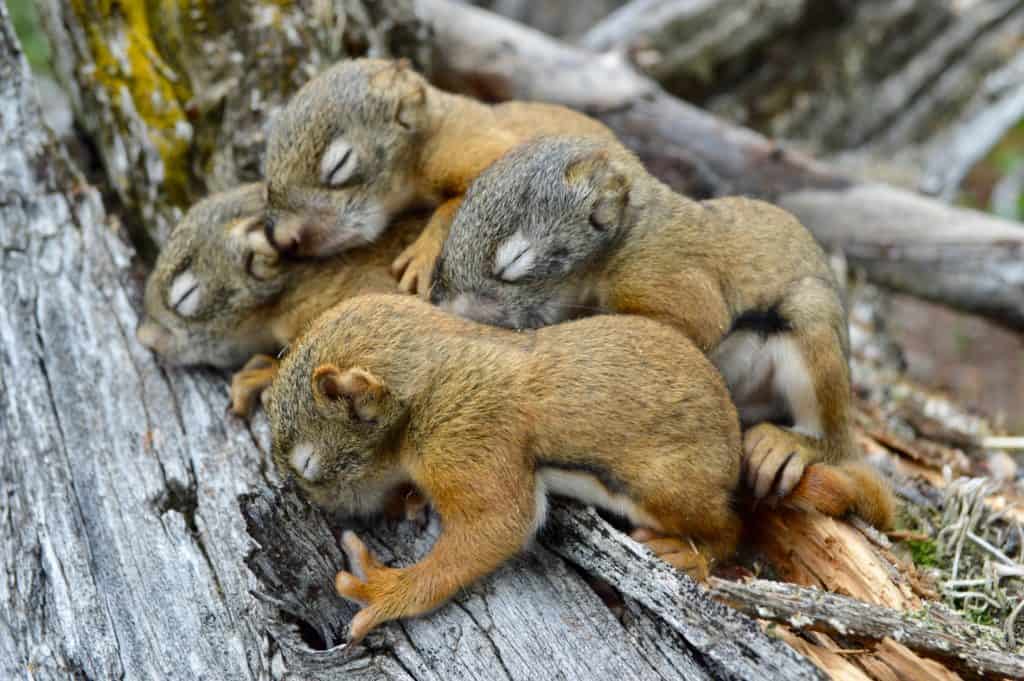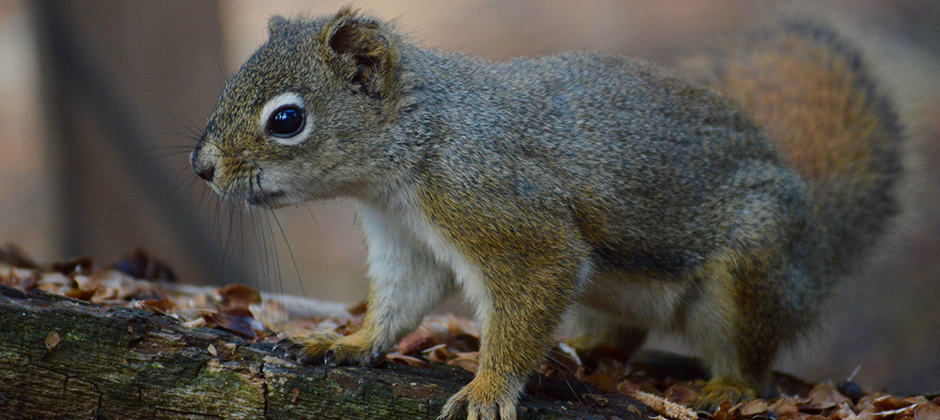Share this article
For red squirrels, it’s good to know their neighbors
Even though red squirrels are a solitary species, knowing their neighbors can help them survive.
“Solitary doesn’t mean asocial,” said Erin Siracusa, a postdoctoral research associate at the University of Exeter. “Social relationships are important across a wide range of systems.”
The species occupies exclusive territories with little social contact, Siracusa said, but those relationships can still make a difference, and the squirrels see more fitness benefits when they have the same neighbors throughout the years.
Siracusa and her colleagues knew, for example, that red squirrels (Tamiasciurus hudsonicus) make vocalizations called rattles. These vocalizations are used in territorial defense, but they might also contribute to the formation of long-term relationships among neighbors. Her team wanted to delve further into these social relationships.
In a study published in Current Biology, they used data collected for about 30 years on red squirrels on Champagne and Aishihik First Nations land in the Yukon. Since the squirrels form middens — hoards of food resources — their territories are relatively easy to locate, and things like reproductive success and survival are easier to monitor.
As part of the Kluane Red Squirrel Project, researchers from the Universities of Alberta, Guelph, Michigan and Saskatchewan have gone into the field each spring to locate individuals based on their unique alphanumeric ear tags. Then in August, they repeat the census. The long-term dataset allows the team to know which squirrels are related to each other and which ones live next to one another.

Twenty-five day old red squirrel pups. Credit: Erin Siracusa
“In the end, the project gives us crucial information about relationships, we know where individuals live, for how long and who is related to whom,” Siracusa said.
Living near relatives didn’t really provide fitness benefits to red squirrels, the team found, which was surprising. “Typically, when we think about fitness, it’s all about kin,” she said. “Those that share genes act altruistically and cooperate with one another. It was surprising to us that kin didn’t matter.”
However, the researchers found that squirrels weren’t really living next to their relatives, which may be one reason kin weren’t important for fitness. But living near familiar, unrelated neighbors did provide fitness benefits. Siracusa and her colleagues think familiar neighbors helped the squirrels establish boundaries and protect one another against competition. In other words, spending less time and energy defending their territories could allow the squirrels to focus more on things like reproduction.
They also found that having familiar neighbors helped aging squirrels. When a 4-year-old squirrel, for example, ages one year, its survival probability decreases from 68% to 59%. But when the squirrel keeps its familiar neighbors, the survival probability goes up to 74%. Not all squirrels keep their neighbors, though, so only some benefit from this.
The work shows that even solitary species have important relationships with others that affect their success, Siracusa said, and while these red squirrels aren’t a species of concern, the research may apply to conservation more broadly. “Many animals need their social partners to do well,” she said. “It’s not just habitat conservation, but conspecifics that matter. When thinking about how to ensure their survival in a changing world, we might need to appreciate social relationships matter more than we previously would.”
Header Image: A red squirrel on the lookout for territory intruders. Credit: Erin Siracusa








